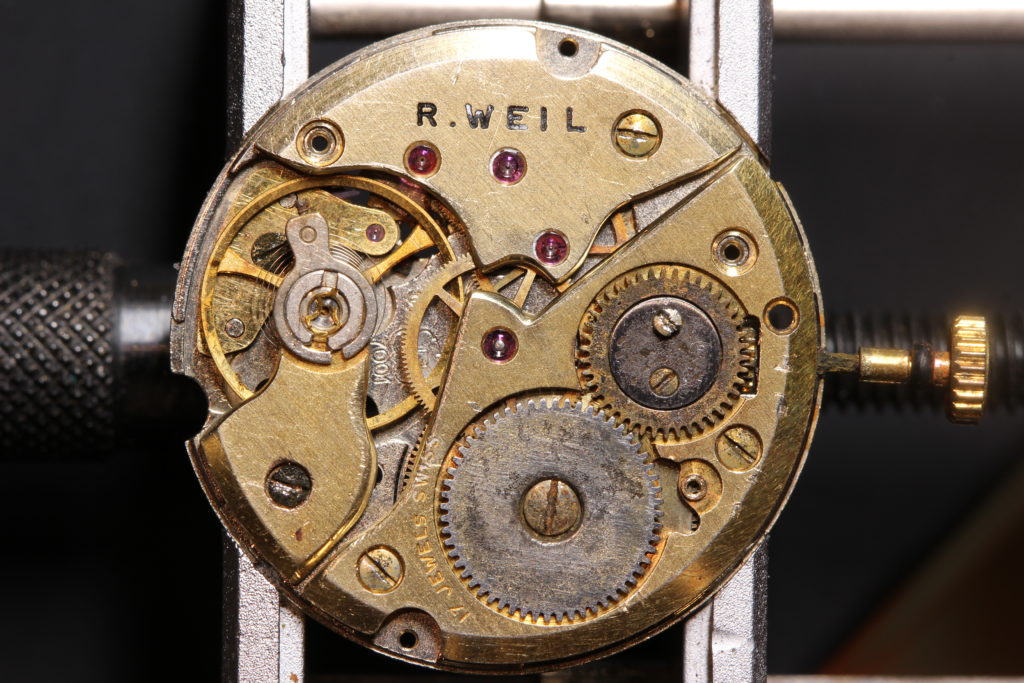Below I try to explain how I took a rusty ETA/Peseux 7001, cleaned it, reshaped the bridges and created bevels. The movement did not work when I got it and still does not work, all the changes were purely aesthetic.
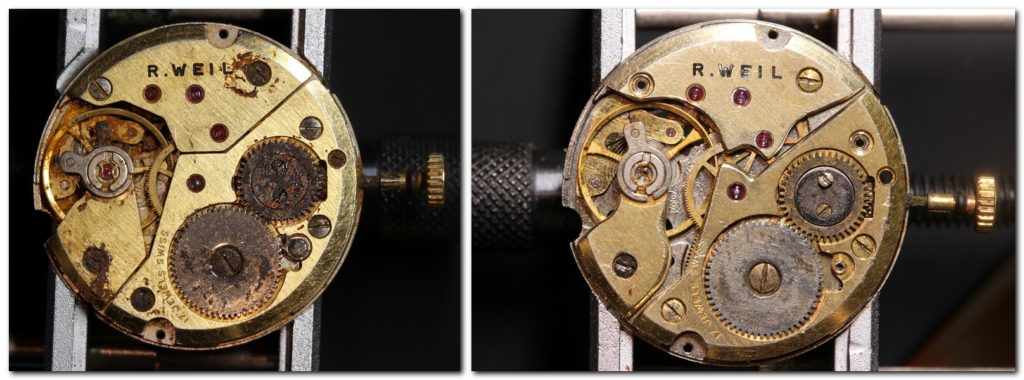
Before I go into the details of the stage I went through, I would like to stress the lessons I learnt:
- Small pieces compromised by rust will be damaged by vinegar (or were maybe beyond repair anyway)
- Putting all the pieces to clean together at once is not a good idea if you want to remember what screw goes with what bridge
- Adding too many angles was overly ambitious
- To avoid leaving tool marks, it is worth going through several different grits of abrasive

The first step of the whole process was to take the movement apart as much as I could. Unfortunately, I could not unscrew the balance cock, I could not separate the mainspring barrel from its bridge and I could not remove the cannon pinion (and therefore the centre wheel). This meant that all those items had to go into white vinegar attached. After about 12 hours, I was able to separate them and they stayed in the white vinegar for another 12 hours.
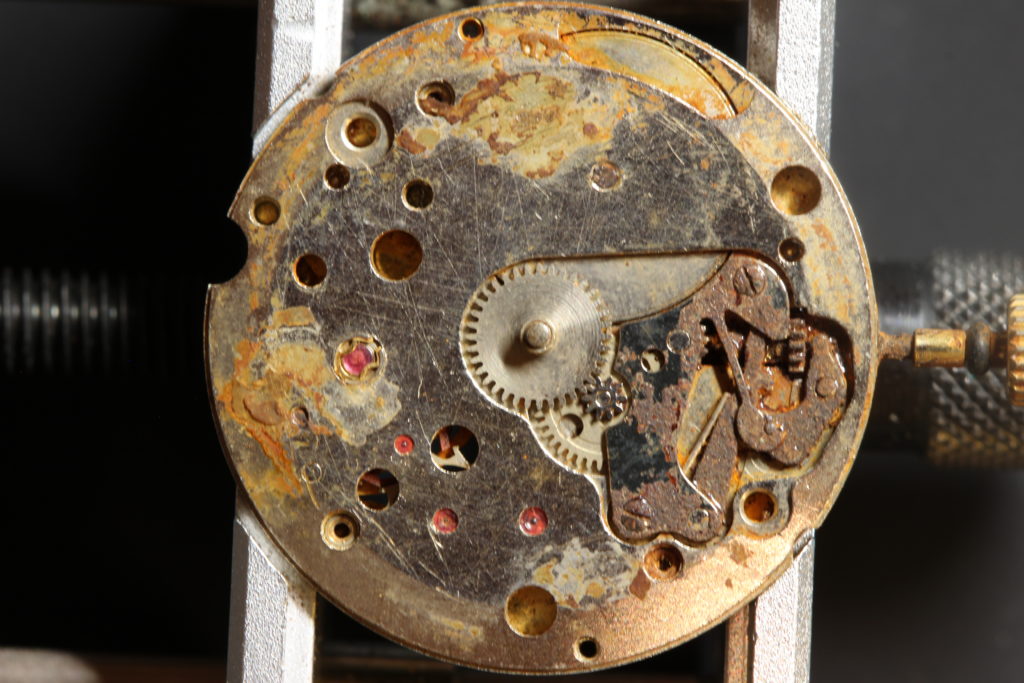
After the vinegar bath, I cleaned all the pieces in my small ultra-sound machine, although I must say I am not convinced it made much of a difference.
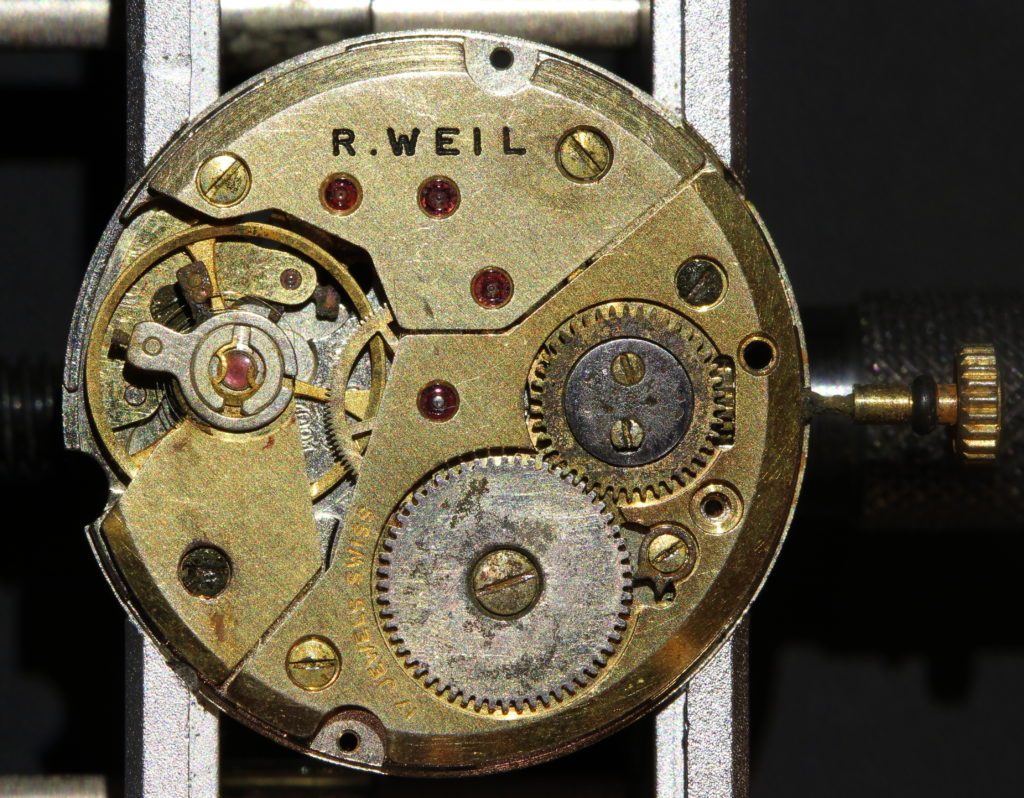
I then reassembled the movement to see what it would look like and to decide how to redesign the bridges.
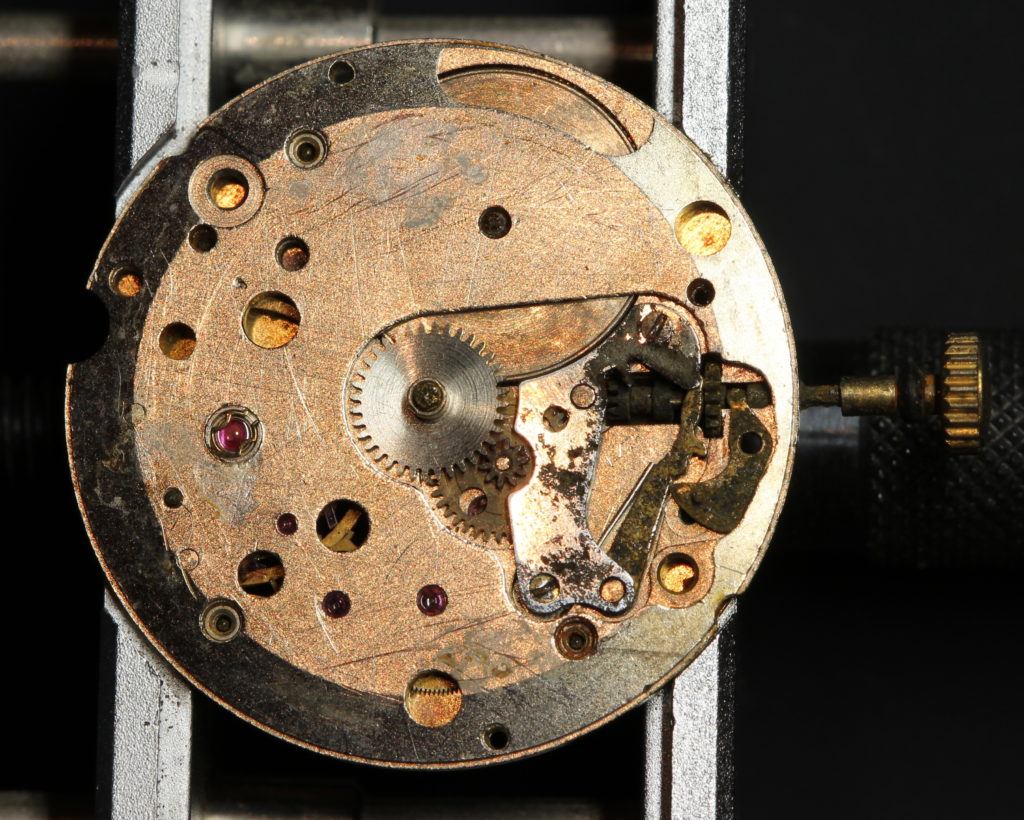
I wanted the bridges to be more rounded, to have both internal and external angles. I should probably have been a little less ambitious.
I first reshaped the bridges using a handheld vice and small diamond files. I then smoothed the sides with 1000 grit sand paper, but should have probably started with something coarser. I then added bevels to all the edges. I then smoothed them with 1000 grit, then 2000, then 3000 and finished with some diamond powder on a small piece of wood. I should have continued with sandpaper until reaching 8000 grit.
